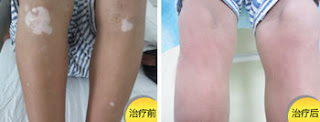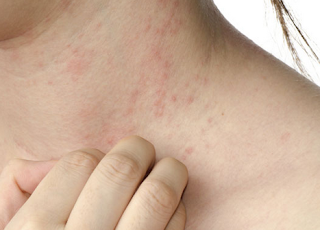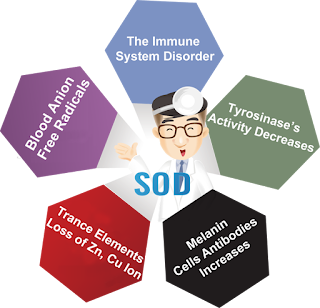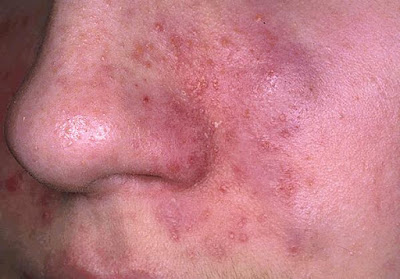Vitiligo consists of white patches of skin that are caused by the loss of
melanin, the pigment that gives skin its color. Melanin is produced by special
cells called melanocytes, which are destroyed in people who have vitiligo.
Experts are still working out the details to understand why this disease occurs,
but evidence strongly suggests that vitiligo is an autoimmune disorder, in which
the body's immune system mistakenly targets and injures these specific cells
within your own body.
Causes of Vitiligo
In the skin, cells called melanocytes produce pigment that gives the skin its colour. Melanin is the pigment produced by the melanocytes. It provides pigmentation for skin, hair, and eyes. When the melanocytes are destroyed, skin cells appear white, and this causes vitiligo.
The reason for the loss of pigment from various parts of the body is not well understood. People with a family history of vitiligo are more likely to have the condition. Vitiligo is also associated with the following diseases:
pernicious anemia
hyperthyroidism
Addison's disease
Treatment of vitiligo
Vitiligo is difficult to treat. Early treatment options include the following:
Phototherapy, a medical procedure in which your skin is carefully exposed to ultraviolet light. Phototherapy may be given alone, or after you take a drug that makes your skin sensitive to light. A dermatologist performs this treatment.
Medicines applied to the skin, such as:
Corticosteroid creams or ointments
Immunosuppressant creams or ointments, such as pimecrolimus (Elidel) and tacrolimus (Protopic)
Topical drugs such as methoxsalen (Oxsoralen)
Skin may be moved (grafted) from normally pigmented areas and placed onto areas where there is pigment loss.
Several cover-up makeups or skin dyes can mask vitiligo. Ask your health care provider for the names of these products.
In extreme cases when most of the body is affected, the remaining skin that still has pigment may be depigmented. This is a permanent change that is used as a last resort.
It is important to remember that skin without pigment is at greater risk for sun damage. Be sure to apply a broad-spectrum (UVA and UVB), high-SPF sunscreen or sunblock and use appropriate safeguards against sun exposure.
Causes of Vitiligo
In the skin, cells called melanocytes produce pigment that gives the skin its colour. Melanin is the pigment produced by the melanocytes. It provides pigmentation for skin, hair, and eyes. When the melanocytes are destroyed, skin cells appear white, and this causes vitiligo.
The reason for the loss of pigment from various parts of the body is not well understood. People with a family history of vitiligo are more likely to have the condition. Vitiligo is also associated with the following diseases:
pernicious anemia
hyperthyroidism
Addison's disease
Treatment of vitiligo
Vitiligo is difficult to treat. Early treatment options include the following:
Phototherapy, a medical procedure in which your skin is carefully exposed to ultraviolet light. Phototherapy may be given alone, or after you take a drug that makes your skin sensitive to light. A dermatologist performs this treatment.
Medicines applied to the skin, such as:
Corticosteroid creams or ointments
Immunosuppressant creams or ointments, such as pimecrolimus (Elidel) and tacrolimus (Protopic)
Topical drugs such as methoxsalen (Oxsoralen)
Skin may be moved (grafted) from normally pigmented areas and placed onto areas where there is pigment loss.
Several cover-up makeups or skin dyes can mask vitiligo. Ask your health care provider for the names of these products.
In extreme cases when most of the body is affected, the remaining skin that still has pigment may be depigmented. This is a permanent change that is used as a last resort.
It is important to remember that skin without pigment is at greater risk for sun damage. Be sure to apply a broad-spectrum (UVA and UVB), high-SPF sunscreen or sunblock and use appropriate safeguards against sun exposure.








